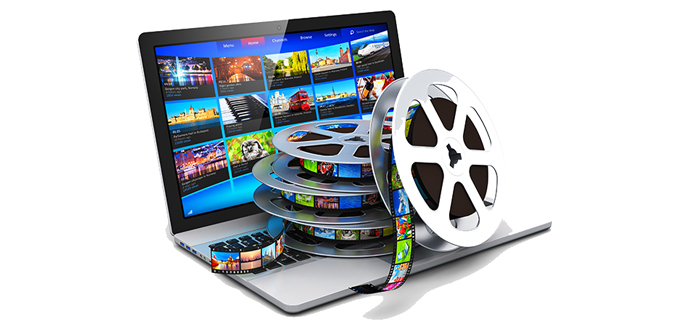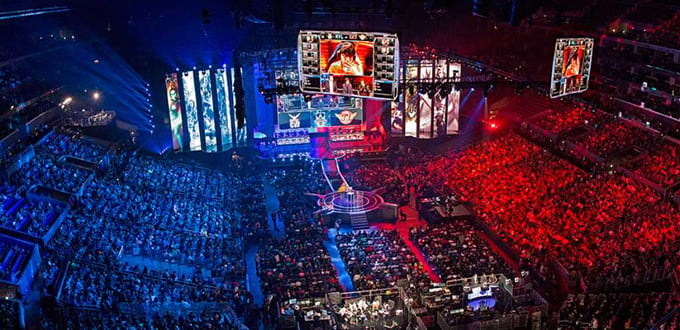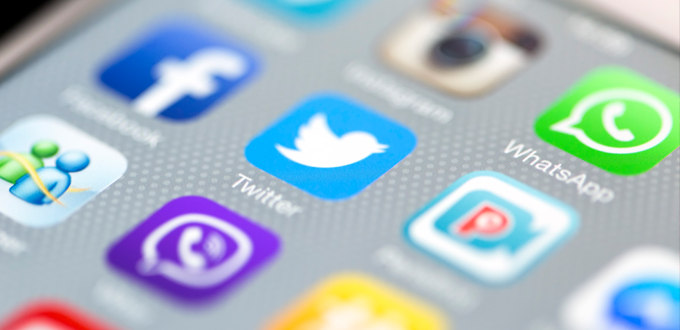
Whether it's first- or second-screening or attending the game live, we are experiencing a revolution in how fans consume and interact with sport. Here, our series of trends across different sectors of the sports industry continues with an overview of some of the technological advances that will give fans a more interactive, flexible and immersive relationship with their favourite sport or team.

1. The rise of OTT
It’s no exaggeration to say that Over The Top (the delivery of content over the internet, as opposed to the traditional TV broadcast route) is set to completely change the sporting landscape in 2017 and beyond.
The business model of every English Premier League club, for example, is almost entirely predicated on the estimated £95m sum that lands in their bank accounts annually from TV broadcast rights, and that’s been the case for over 20 years. 2017 is the year when the need to think up a new plan becomes pretty urgent.
The problem is that millennials prefer to consume sport online. When US broadcast giants ESPN report 621,000 lost subscribers and Sky Sports reveal viewing figures are down 19% , it’s not because fans are losing interest. They’re just engaging with sport in different ways (and unwittingly undermining their favourite sports’ financial support structure in doing so!).
This presents huge challenges for rights owners, rights holders and sport governing bodies. Some think they’ve found the answers.
Imitating OTT pioneers Netflix, the live sports streaming service DAZN was launched in Germany, Austria and Switzerland. For a €9.99 monthly subscription, viewers can choose between almost any match across Europe’s top football leagues, plus NBA, NFL, tennis, motorsports and a whole lot more. It’s a model we can expect to see much more of.
This month, the ATP launched a revamped version of TennisTV , a live streaming service which COO Stuart Watts explicitly says will “capitalise on the latest viewing trends of streaming media and OTT consumption.”
This so-called D2C (Direct to Customer) model will expand significantly in 2017. It's interesting to note Real Madrid's partnership with Microsoft and Barcelona's with Amazon, which will eventually plug their millions of fans around the world directly in with their live match coverage.
As digital consumption continues to grow, at the expense of traditional broadcast routes, the value of TV rights will decline and athletes’ wages will still need paying. It’s a major threat, but 2017 will be an open goal for the industry’s visionaries, risk-takers and innovators.

2. Diversified VR experience
The technology behind the virtual reality experience has gathered pace in the last few years. From Microsoft Kinect in 2010, to 2012’s launch of Oculus Rift (later purchased by Facebook), Google Cardboard, HTC Vive, Samsung Gear VR and, in 2017, Microsoft Windows VR, each new iteration has seen a leap in the quality of the immersive experience.
So far the crossover between sport and VR has largely been in gaming, but that’s changing rapidly, and 2017 will see its potential being unleashed across elite performance and fan engagement .
STRIVR are leading the way in performance training. Using GoPro and Blackmagic cameras, in just two hours they can capture enough footage to accurately reproduce in-game scenarios in immersive VR for their suite of clients in the NFL. Dutch start-up Beyond Sports have made inroads with Holland’s national team, Ajax, PSV Eindhoven and AZ Alkmaar. In 2017, they hope to announce partnerships with English Premier League clubs, too.
The realisation of its potential will explode. Practising in a virtual reality environment improves players’ cognitive competence, decision-making skills in intense competitive scenarios, reduces the risk of injury and allows injured players to carry on training. Although VR will never replace real, physical practice, it can provide new, previously-impossible perspectives for players, as well as empathy and fresh tactical insight for coaches.
In 2017, VR for performance may well drip from the elite ranks down to the rest of us. Attending a yoga class in your own living room, sparring in a boxing ring against an opponent in a different country, or outstripping the peloton in an amateur Tour de France: all are possible – even probable – VR experiences we’ll soon have access to.
VR is set to revolutionise fans’ matchday experiences, too. November’s NBA game between the Sacramento Kings and San Antonio Spurs was the first to be broadcast in VR. Viewers could watch the action from a myriad of angles, including underneath the basket, in the dressing rooms, and from the scorer’s tables. Viewers of June’s US Open golf (who owned the requisite headgear) could also ‘walk the fairways alongside the pros’ – but only the 10 th and 12 th holes.
This dramatic user experience will transform the way fans interact with sport. ‘How did Messi miss that chance?’ ‘How do you return Djokovic’s serve?’ ‘What’s it like standing over a 10-foot putt to win a Major?’ A pair of VR goggles will allow us to answer these questions for ourselves.

3. Esports revolution
Esports will break through the one-billion-dollar barrier in 2017. That isn’t a prediction; it’s a fact .
In 2016, there was a landgrab to sign up players, teams and leagues, with ‘real’ sports teams like Schalke 04, Paris St Germain and the Philadelphia 76ers purchasing teams of gamers. The size of sponsorship deals increased and big hitters like Coca-Cola, Barclays and Gillette jumped aboard.
What’s less promising for the industry is the rather haphazard regulatory framework that’s arisen. National associations have formed but there’s little cohesion between the dominant area, Asia, and America and Europe. Defying the trend for globalisation, many observers see the scene becoming increasingly fragmented, with local leagues and national associations (as opposed to worldwide) being favoured.
Elsewhere, various players’ unions have been mooted and 2017 is likely to see the gambling industry solidify its interest, despite concerns over the potential for match-fixing.
When over 100 million people a month subscribe to a digital platform ( Twitch ) to watch other people playing , it’s clearly an area with sizeable room for growth in 2017. Facebook Live have got in on the act by signing a deal with game producers Activision Blizzard to show live esports, while Ginx esports TV want to become the world’s biggest 24-hour esports TV channel in 2017, targeting 23 million viewers. Rumours that Riot may sell North American broadcast rights to the industry-leading League of Legends will significantly up the stakes.
Overall, viewers are forecast to reach 303 million by 2019 (across TV and online), with all the increased monetisation opportunities that accompany such astounding figures.

4. Live social media coverage
You wouldn't expect cricket's Caribbean Premier League to herald a new era in sports broadcasting, but last summer's T20 domestic jamboree may be looked back upon as a trendsetter.
The CPL was the world's first sports league to supplement its existing broadcast deals and use Facebook Live to show all live matches. Coverage was available in 40 countries and 5.3 million people watched via the social media network.
Real Madrid have also started to push exclusive content from their club TV channel to Facebook Live, generating 110 million video views. Contractually they can't show live matches, but with the extended reach, engagement and revenue that could bring, and the backing of Microsoft , you can bet they'll be applying pressure when existing TV broadcast deals come up for renewal.
The NFL have embraced social media's role as a 'disrupter' of the way fans traditionally consume their sport. As well as their much-discussed deal with Twitter , they now employ people at games purely to make video for Snapchat, and fans can follow matches on Snapchat via 'live stories' consisting purely of user-generated video shot by fans at the stadium. Last season this was watched by 65 million people.
What all stakeholders are learning is that there's no longer one, single route to monetisation, and social media is right at the centre of a litany of new alternatives.

5. Enhanced mobile involvement
A plastic tip-up seat is not enough to form the basis of a typical millennial's matchday experience. Unless he or she is taking and sharing video and discussing the game live on Instagram/Snapchat/Twitter/Facebook/WhatsApp, the day may as well never have existed.
Professional clubs in Europe have generally been slow to cotton on to this, and in 2017 many will be hastily retro-fitting or installing technology that can deliver fast, reliable connectivity during periods of heavy digital traffic (e.g. at half-time or after a goal).
Many will go much further to channel various elements of the matchday experience through fans' mobiles. Mobile ticketing will increase, augmented reality will be used to direct you to your seat via your mobile screen, and fans will soon be able to order food to their seat without the inconvenience of queues.
Clubs can capitalise on the improved fan data this activity will give them. They'll possess not only attendance records, but info on fans' matchday habits too. This will create scope for special offers, premium discounts and other segmented digital content.
This article was written by the GlobalSportsJobs insight team.
Give your career in sport a boost with the latest live vacancies in Media, Technology & Broadcast , or create an account today and stay up to date with all the latest industry knowledge, events and jobs in sport.
Global Sports: the world’s leading specialist careers platform for the international sports industry